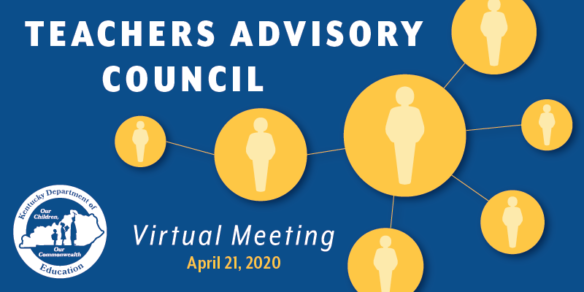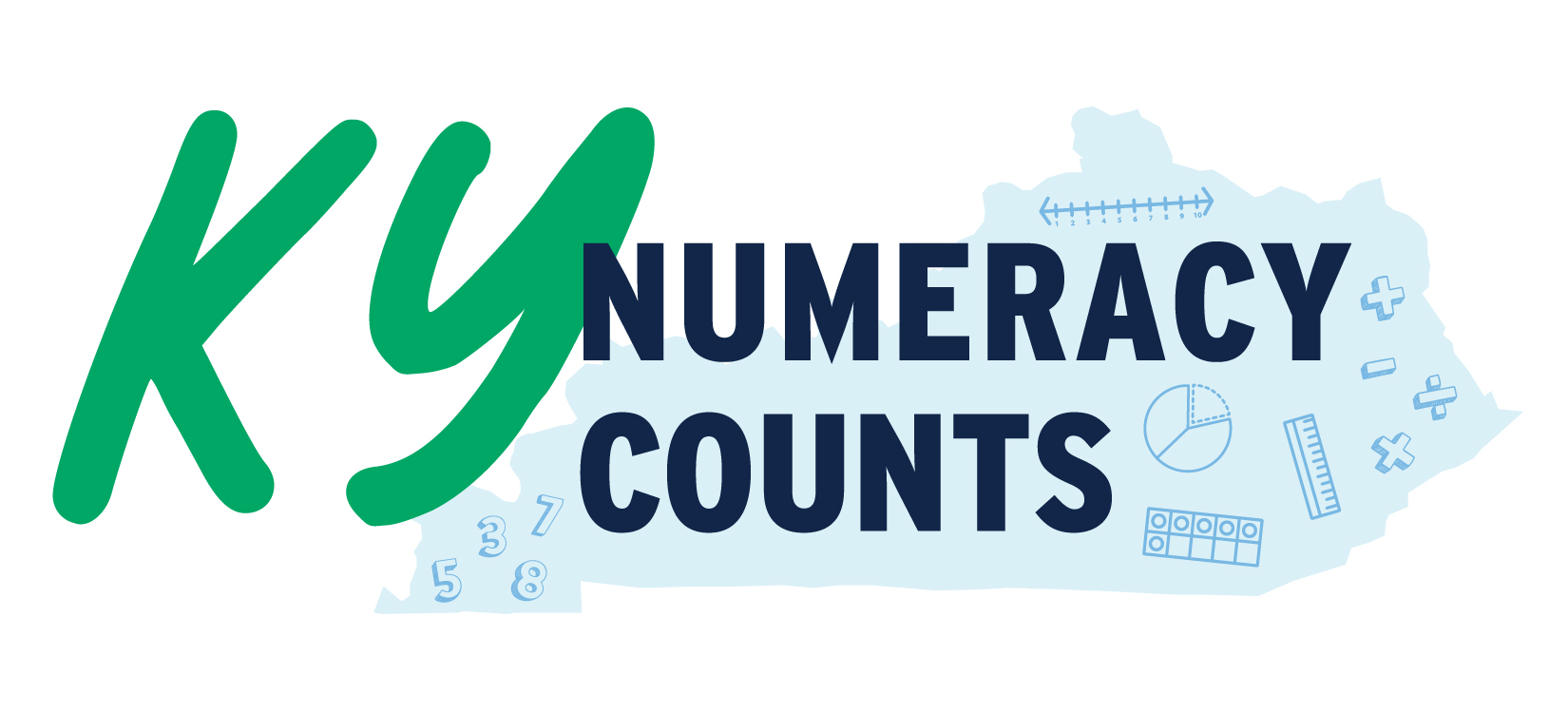
- Kentucky has a 93% student participation rate in non-traditional instruction during the current closure period.
- NTI has been most successful in schools that effectively combine digital learning and work on paper.
By Mike Marsee
mike.marsee@education.ky.gov
One day after the announcement that in-person classes would not resume at Kentucky schools for the rest of the 2019-2020 school year, Interim Education Commissioner Kevin C. Brown expressed his gratitude to teachers who will continue using non-traditional instruction (NTI).
Speaking to the Kentucky Department of Education’s (KDE) Teachers Advisory Council during its virtual meeting April 21, Brown praised the efforts of Kentucky’s schools and districts to continue educating students during the COVID-19 emergency.
“I believe we’re doing it better than any state in the country, not because of the department or me or anything else, but because of you,” Brown told the teachers. “While buildings have been closed since March, school has still been open and that’s due to your hard work.”
Brown said he is aware that teachers are “exhausted,” as many districts are in their sixth week of at-home learning since Gov. Andy Beshear recommended that in-person classes be suspended beginning March 16 to help mitigate the spread of COVID-19 in communities across the state.
“I couldn’t be more proud of what you all are doing,” he said. “I’ve been looking at social media, hearing stories of what’s going on in our schools.”
He said information KDE has received from districts affirms that it is effective. He said Kentucky has a 93% student participation rate during the current closure period, which is the highest percentage he has heard from any state.
“We’re reaching students,” he said. “That is consistent with what we’ve seen with NTI over the last 10 years. To be able to reach those kids when we’re weeks into NTI at a 93% rate is amazing, and my hat’s off to you.”
David Cook, who coordinates the KDE Non-Traditional Instruction Program that is in use in all of Kentucky’s 172 school districts and 53 area technology centers and at Kentucky School for the Blind and Kentucky School for the Deaf, said the 93% participation rate is equivalent to the student participation rate on NTI days prior to the COVID-19 closure period.
Cook said the NTI Program saved Kentucky schools 3,429 days of instruction between March 16 and April 17, and it will continue to save an additional 860 days per week.
He said it has become clear that NTI has been most successful in schools that combine digital learning and work on paper.
“Districts that have a blended approach to NTI – a combination of digital and paper rather than one or the other – and that use it effectively are having the most success with NTI,” he said.
Cook said KDE and districts have learned some valuable lessons through the extended use of NTI. For example, he said, teachers have shared best practices that include “really creative ways of presenting the content,” and he said they also have discovered more and different ways to administer both formative and summative assessments.
Cook said KDE has learned that there should be an increased emphasis on professional development tailored to remote learning.
He also said concerns remain about equity, because not all students have the same level of connectivity and access to online learning, about teachers’ ability to connect to students and about curriculum gaps that could emerge at the start of the next school year.
Miles Johnson, an art teacher at Warner Elementary School (Jessamine County) who is part of the 21-member Teachers Advisory Council, said the NTI system has been tested mightily this spring and has held up well.
“I’ve had faith for years in NTI,” Johnson said. “I have a lot of confidence that after this and throughout the summer we will be even better prepared for whatever comes up in the future.”
Impact Kentucky
The advisory council also discussed how best to release the results of the Impact Kentucky working conditions survey administered to educators earlier this year. The release of the survey data originally was scheduled for March, but was pushed back indefinitely.
Rob Akers, the associate commissioner in KDE’s Office of Educator Licensure and Effectiveness, asked the teachers to consider whether the survey results should be released in time to allow schools and districts to use the information for planning professional development that might occur at the end of this school year after instructional days have ended but before teachers’ contract days are fulfilled. Several teachers said that would be beneficial.
“If we give districts and schools the data, then school leaders will have the autonomy to use that data now or to focus on aspects of professional development,” said Stephanie Beason, a teacher at 212 Degrees Academy (Warren County).
One teacher took a different view, however.
“So many teachers and administrators are just almost at the breaking point with stress,” said Chandra Britt, an alternate assessment teacher at Kentucky School for the Deaf. “I know we’re going to have plenty to do with those last days, and I don’t know that it would get the attention that it deserves at that point.”
The council’s next meeting will be July 14.
MORE INFO …
- April 21 Teachers Advisory Council meeting
- Kentucky Department for Public Health’s COVID-19 webpage
- KDE’s COVID-19 webpage
- COVID-19 Hotline (800) 722-5725




Leave A Comment